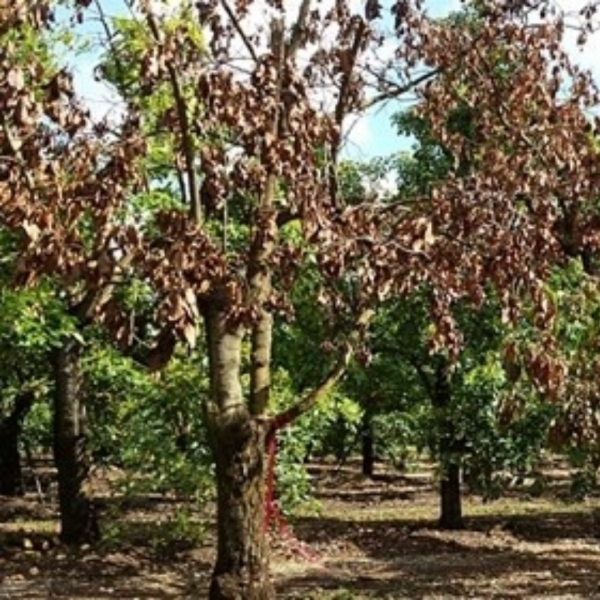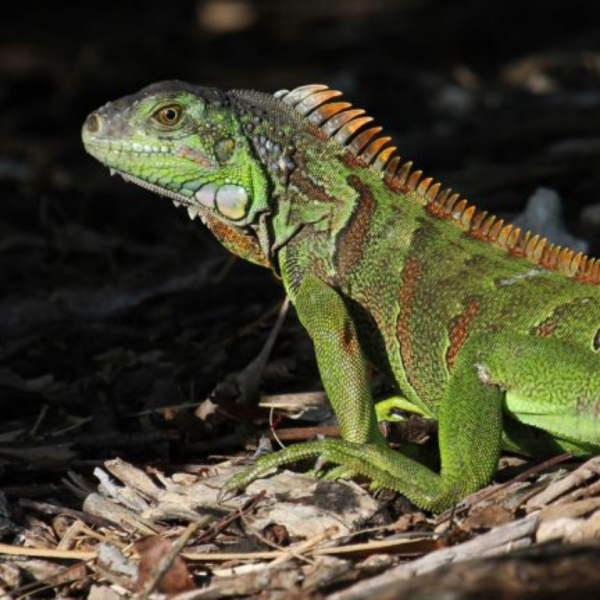Florida is home to beautiful coastal, forest, and prairie habitats that support a wide variety of species. However, these habitats are rapidly decreasing due to human actions. Development, such as roads and housing, are altering the ecosystems that we rely on. It is vital that we manage our land and water to protect Florida’s native species. Florida’s biodiversity is facing the threat of a rapidly growing invasive species population. An organism is categorized as invasive when it causes harm to the economy, environment, humans, and other animals or plants. The inadequate management of invasive species has allowed this issue to grow, and it is of utmost importance that we work together to protect the natural biodiversity of Florida.
Invasive Species Threats
Invasive species are a prominent threat to the natural wildlife of Florida. Some of the more common invasive wildlife species are the green iguana and the Burmese python. Green iguanas originated from Central and South America and their population has increasingly grown since the 1960s. These iguanas are creating tunnels and paths that have been collapsing sidewalks, seawalls, and the foundation of homes. They also eat plants and certain kinds of butterflies, posing a threat to native species. The Burmese python has been wreaking havoc on Florida wildlife since the 1980s. The pythons have been invading wetlands and killing animals such as raccoons and rabbits. Since 1997 the Everglades National Park raccoon population has dropped by 99.3 percent due to the pythons. Many ecosystems’ balance is being threatened as well as the species they support.
Invasive species are not just limited to animals. Laurel Wilt is a disease common to trees of the laurel family, that is caused by the fungus Raffaelea. This fungus infects the tree and restricts the flow of water, causing the leaves to wilt. Once infected, trees begin to die off within a few weeks. The fungus is carried by the redbay ambrosia beetle that is native to Asia but was discovered in the US in 2002. Laurel Wilt is rapidly spreading through avocado trees and devastating the commercial avocado industry. Invasive species from the plant, animal, and fungi kingdoms are a threat to Florida’s wildlife.
Ways to Improve Management
It is crucial that we work to restore natural conditions that support native wildlife and biodiversity on publicly owned lands. Prescribed fire is an important management tool that helps restore native plant populations and reduce non-native invasive species, when used with other removal techniques, like herbicide application. Many Florida ecosystems depend on prescribed fires. For example, longleaf pine ecosystems are highly diverse ecosystems that depend on frequent fires. These fires facilitate open grasslands and remove competing trees and shrubs that would block out sunlight, creating conditions for longleaf, and a plethora of native groundcover plant species to flourish. The application of prescribed fire to longleaf ecosystems also aid the survival of well known threatened and endangered wildlife, such as gopher tortoises and red-cockaded woodpeckers.
Managing lands to support biodiversity is also a key component of a new conservation campaign, recently endorsed by the Biden administration as part of its climate action plan. The 30×30 campaign aims to conserve 30% of our land and oceans by the year 2030. In Florida, we’re well on our way to meeting this goal, especially when we prioritize appropriate land management practices within our public lands. Supporting the 30×30 campaign in Florida will lead to improved conservation of the land and water that support wildlife and provide Floridians with clean water and air.
Ways Floridians Can Help
There are many ways to get involved to prevent invasive species. The best way to combat invasive species is to prevent them from occurring in the first place. Many invasive animal species were introduced to Florida through the pet trade. When buying an exotic pet, always do research to fully understand the needs of the pet. There are sources available if you find you are no longer able to care for an exotic pet. For example, the FCW hosts Exotic Pet Amnesty Day Events or a Pet Amnesty hotline. It is also important to stay educated on Florida native species so that you can identify and report a non-native. If you own a home, choosing native Florida plant species is beneficial because they require less irrigation, fertilizer, and maintenance. Many of these species also provide habitat and food for other Florida native wildlife like, birds, bees, and butterflies. The University of Florida, Institute of Food and Agriculture Sciences (UF/IFAS) Extension has many resources to help Florida residents build ideal landscapes. You can speak to an Extension specialist, find information on sustainable landscaping, or take gardening classes. You can show support for the many organizations and programs that are fighting invasive species and protecting Florida’s biodiversity.





